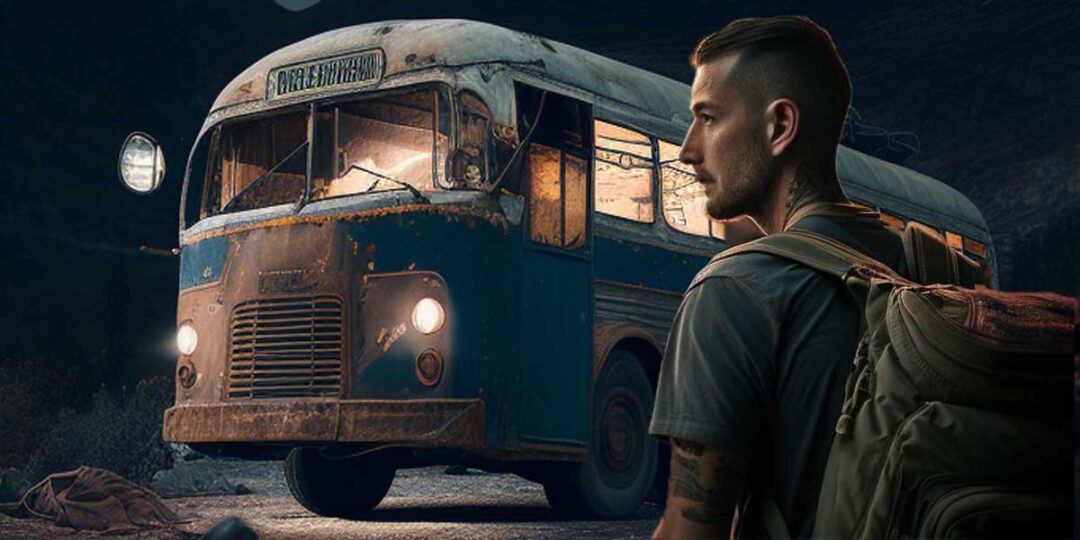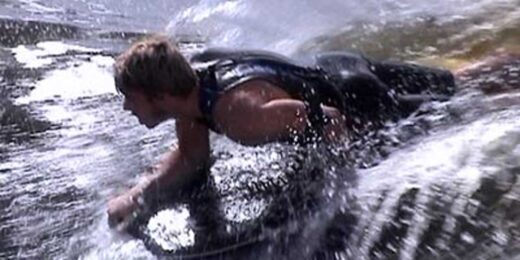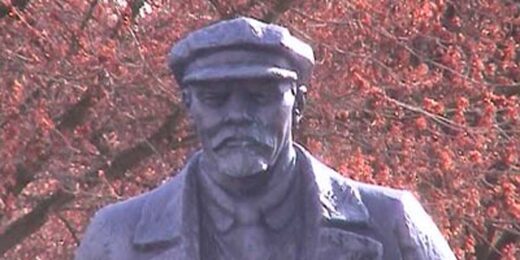An Impromptu Gathering in the Middle of Laos
First published on Itchy Feet Blog, 2003.
I grumbled as one of the early starters tried to rouse me from a dream about a long wooden boat floating past another group of near-naked children yelling “Sabaai-dii”. There was no way I was going to get up, pack, and stumble bleary eyed from the guesthouse on the banks of the Mekong River to the other side of Luang Prabang in time to get the 8am bus. I rolled over, there was another bus at 11 and besides, this was Laos, no need to hurry.
The timetable written in chalk on the wall of the wooden ticket office stated that the 11am bus to Vang Vieng should take from six to eight hours. Looking at the ancient bus that stood in the middle of the dirt field that served as the bus station, eight hours seemed more likely. As the engine and gears groaned up the first climb into the mountains, 10 hours was looking optimistic.
The interior of Laos is almost pristine forest, despite Western forces dropping more bombs on the tiny landlocked country than were dropped by all countries during World War 2. The absence of modern commercial industry like logging means that traveling through the country is an overdose of natural landscapes. It is easy to ignore the relative discomfort of the creaking bus winding up into the mountains as every corner reveals a new mountain pass or roadside village, complete with children waving under broad green jungle leaves used as umbrellas to shelter from the occasional wet season downpour.
In one village about half way through, Marcos, an Argentinean with a habit for exhibitionism, appropriated a guitar and gave an impromptu performance of I will survive, a choice that amused the locals no end and proved to be slightly prophetic as to what was to come.
At about 4pm the bus, hugging the thin road rounded a tight corner. Out of the windows, a razor-backed ridge of mountains fell away into a green valley below. The travelers aboard craned their necks and rushed for cameras. Most of the passengers were so fixated on the view; they did not notice that the bus had stopped behind a stationary convoy of trucks, busses, tractors and trailers. Our driver got out to take a look at what the hold up was. He returned minutes later, his face resigned, his shoulders shrugging as if to say, “Ah well.” The message passed down the bus – “It’s a landslide, this bus is not going anywhere.”
The western travelers on tight schedules bustled and shouted to get more information, first from the driver and then from other trapped motorists closer to the scene. In typical Laotian fashion, the estimates for how long we would be stuck on the cliff-side ranged from three hours to four days. Our immediate thoughts were of turning the bus around, but by then it was hemmed in by vehicles that had been following behind.
Down at the site of the landslide, behaviour was frenzied. Half a cornfield had given way above the road. The pile of red dirt had buried a small truck to within a foot of the top of the roof. Fortunately and somewhat freakishly, one of the first trucks on the scene had been carrying a small bulldozer, which was now the primary weapon being used to try and free the truck, but even with mechanical help it looked like we would be there long enough for the incredible view to become tired.
The locals meanwhile were making camp. They did not complain or look in the least bit inconvenienced by the delay. Some looked like they welcomed the enforced break as they set up impromptu market stalls in front of their vehicles for the captive buyers. Others cooked rice over portable coal stoves and rolled out sleeping mats.
As a group, we were well prepared to deal with the unscheduled break. Between us, we had baguettes, potato crisps plus parcels of sticky rice bought from the mobile street stalls. For entertainment we had a portable CD player, speakers, books and playing cards. We sat in a circle in the middle of the road and figured it could be a lot worse. In fact it would be idyllic if we only had some…
“BEER?” Two English guys joined the group, beaming, their arms encircling as much Beer Lao as they could carry. They had climbed over the stricken truck still mostly buried and wandered down the road on the other side where, amongst a similar convoy of stranded vehicles prevented from coming in the opposite direction, distributors of the national brew were selling it off the back of the truck.
To get to the beer truck we needed to pass over or around the one that was buried. A few hours had passed, and the bulldozer had made only a small dent in the pile of mud. A couple of futile attempts at pulling the truck free of the mountainside had inspired the self appointed team of road clearers to start unloading two tones of timber before trying again. Unpacking the truck looked like it would add a good few hours to the delay. Marcos the Argentinean guitar player, determined to prove he would survive, weighed in to lend a hand while the rest of us continued with our mission.
We found the beer truck. Some of the locals had decided that if they were going to be stuck on a mountainside they might as well have fun and they danced around an ancient stereo performing group Karaoke. We watched them as we chilled the beer in the mountain stream running next to the road.
As the sun went down we gave up on playing cards and reverted to telling traveler tales of where we had come from and where we were going to. We swapped recommendations for guesthouses, tried to authenticate rumours of unspoilt villages and fantasized about how to get to the Plain of Jars without having to take a sixty hour truck ride. The stars came out and instead of sitting on the road we climbed the ladder to the top of the bus and rested on the packs on the roof. An English guy poked his head up and asked if anyone had any papers, his only hope was to roll his cigarettes in low denominations of Kip.
Thoughts turned to sleeping. Some people had mattresses and others had mosquito nets. Some wanted to sleep under the bus and some preferred the roof under the stars. And then the horns started. Through the fog that had descended on the pass, lights were on and things were moving. Trucks, busses and tractors from the other side crept through the temporary car park on our side, horns waking locals sleeping under their own transport. The makeshift beds were cleared away, the stalls, now out of food were packed up and even our bus started to inch forward.
We should have been cheering. The hold up had only lasted about eight hours and we would make it to Vang Vieng before 3am. The mood on top of the bus was somber though. Those of us who were comfortable wrapped in blankets against the packs, and looking forward to sleeping on the bus felt like our adventure had been cut short. We stayed on the roof, hanging onto the pack rails as the bus sped along cliff-top roads, looking up at the stars, getting quite cold but we didn’t care.
There were two lights on in the one street town of Vang Vieng at 3am. One of them thankfully was a guesthouse that happened to have a couple of rooms vacant. We wondered what this sleepy village had to offer that could compare to an impromptu cliff top party.




No Comments